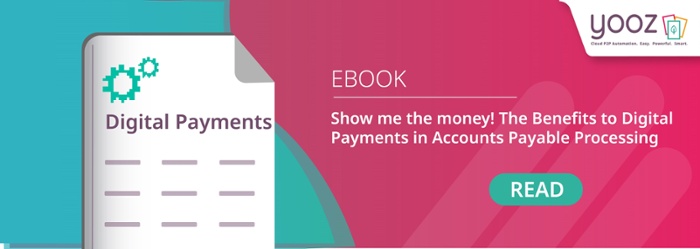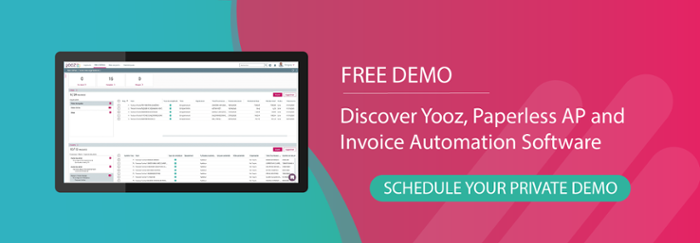“Markets are conversations.” That’s the fundamental insight from the now legendary Cluetrain Manifesto, a bold list of changes that the web was bringing about for companies and consumers. Yes, it was originally posted in 1999 and came out as a bestselling book in 2000, but almost all of its points still hold true two decades later.
We buy, sell, and transact best when we exchange information, fast and frictionless. And there’s no place that greases the wheels of informed commerce better than the web with its myriad connected tools and apps. If an organization wants to succeed, it has to facilitate better communication, both internally and externally, to empower all participants to talk and listen. That kind of networking is at the core of a smart payment automation solution.
Processing invoices from the purchase order all the way to initiating payment is about communicating, after all. Vendors make an offer, buyers accept it, and then along comes a Purchase Order (PO), which triggers all kinds of decisions along the value chain up until we take delivery and receive an invoice requesting payment. No matter in what format it arrives, that lowly invoice contains a rich layer of information that takes our transaction-based conversation further step by step.
No More Disconnects With an Accounts Payable Automation Process
The PO lists the product in question, the quantities, the amount and due date, the payee information and any discounts offered for early payment (or late fees if things progress too slowly). At any step along that accounting workflow process there can be misunderstandings, disconnects, and outright mistakes. Together these negative points represent a break-down in communications between supplier and buyer as well as internally between the accounts payable department and other parts of the organization.
A solution to automate invoice processing and payment is hands-down the best way to make sure this complex information exchange works well and avoid negative points, and continues to do so every time an invoice comes in. The secret to success: ease of use from end to end.
When an invoice comes in, it needs to be quickly captured, regardless of its format or channel. A modern system for AP automation is able to capture paper invoices, faxes, email attachments, and even snapshots of a document that were submitted via smartphone, not to mention invoices that were born digital and already come in an electronic, structured format. Since a growing portion of invoices are digitized but still unstructured - think Word documents or PDFs - a payment automation platform must first make sense of those submissions.
Getting the (Paper)Work Done: How Payment Automation Software Delivers
An AP team that has to deal with hundreds of documents a day needs to rely on a platform that takes as much as guesswork as possible out of this workflow process. Communication done right means to get actionable information as quickly and as error-free as possible and move things along to the desired end state: initiating a payment to make the vendor happy. Not once, not twice, but every single time.
That’s where the second step in the process comes in: extracting all relevant data without human intervention. Platforms such as Yooz have the proven smarts to read, understand, and index all important details in an invoice. Thanks to Optical Character Recognition (OCR) coupled with Robotic Process Automation (RPA) and a growing layer of Machine Learning (ML) algorithms, humans don’t have to sweat the small stuff any longer.
Software makes sure that a PO and an invoice match, that amounts and account information are correct, and due dates are noted so that no payment deadlines are missed. GL coding is automatic, too, of course. Together all of these steps cut down on processing time and errors.
The AP staff only enters the conversation when value-added tasks are called for. If the platform flags an invoice as an exception, for instance, it’s up to the pros to review those documents and, if appropriate, clear them for approval. Software, again, makes sure those steps in the market-driven conversation are as streamlined as possible.
Humans Have the Last Word: Streamlining Your Workflow With AP Automation
The big advantage of having a so-called straight-through process workflow is that humans will only need to get involved when it is necessary for them to jump in and solve problems. Barring any "red flag" issues, a modern payment automation process is smart enough to carry on a conversation amongst itself and other parts of the workflow (such as the ERP system) to capture, review, and reconcile documents.
Addressing the right parts of the team is also part of its job. Once an invoice has been read, indexed, and cleared the review process, it is then routed to the right (meaning designated) people in the right order for approval. Think of AP automation like someone who’s working a room full of very busy people. They only want to chat with you if you have something interesting for them. A smart AP system doesn’t blurt out data, it knows whom to ask plus when and for what.
If an invoice is above a certain threshold, for instance, it should go to person A for approval, perhaps even to person B after that. If it’s coming from a vendor who should get some special attention in trying times, it should go all the way to person C for immediate payment. Or if a new vendor has been onboarded, the invoice should be fast-tracked by somebody outside the AP team. Who knows, it may help build a more resilient supply chain or could be of interest to the R&D team that’s been dying to get their hands on a parts delivery for a new prototype. Luckily, an intelligent platform lets a company set up all kinds of rules to make sure the conversation around any transaction flows freely.

Where’s the Invoice? Payment Automation Software Knows
Let’s talk about payments! If markets are indeed conversations, that’s the part of the deal where silence is deadly. Who wouldn’t like to know that their invoice is about to get paid and electronic funds are on their way? Luckily, automation platforms in the cloud enable organizations to do just that as part of the regular process.
They create magic shortcuts between departments to pay approved invoices fast and make it extremely easy to keep suppliers in the know. Today, AP staff spend about one-third of their time hunting for and fixing errors in invoices, answering phone calls and emails from vendors who want their questions answered immediately.
Keep the Conversation Going from Anywhere: Remote Access with AP Automation
When your AP workflow process lives in the cloud, any authorized staff member can call up all relevant information in a browser or on their mobile device. In the office, working remotely, ‘hotdesking’ or ‘notdesking’. The location - or the time - matter when you have a system like Yooz. Not only can team members see the documents in question, but they can also perform keyword searches to get to the bottom of things, such as pulling the corresponding PO that might have mentioned payment terms or discounts.
Setting up payment is as easy as 1-2-3. Staff pick the invoices to be paid, select the full or partial amount, and go with a manual or automated schedule. The platform takes care of the rest at the preset intervals and amounts, but only after performing a few more checks to thwart duplicate, erroneous, or fraudulent payments. If payment is made by virtual card, organizations can generate cash-back with every invoice, which unlocks a valuable new revenue stream.
On the vendor’s side, a platform for payment automation means the conversation that started with an order coming in will continue. They can get onboarded with a single email address. All that’s left to do is pick the preferred payment method, from electronic or paper check to ACH. The upside: vendors will always be in the know where things stand and when to expect their money. It eliminates the need to call, stay on hold, be transferred, and/or chat with a member of the AP team to only find out the answer to that one very important question: where’s my payment?
Skipping Down the Digital Audit Trail With Payment Automation Software
Likewise, colleagues conducting a review or an audit later on will save time since AP automation creates a detailed digital audit trail that shows who accessed what documents when and authorized what actions or payments. No more having to transport documents, maintain files, or even be concerned about restricting access (a potential problem when something is needed and the keyholder is away). When document management gets smart, document security and frustrating file hunts are a thing of the past. They can be replaced with having only useful conversations around the bigger questions.
Then there’s data export, the fifth and final step of AP automation. Once payment has gone out, a platform worth its salt will automatically push that information to the organization’s ERP system or financial software, updating the books and reconciling invoices with POs. Again, it’s a kind of conversation that should happen without human intervention, one that is fully automated, trackable, and reliable.
A platform like Yooz enables this back and forth because it easily integrates with more than 250 of the most popular ERP and finance packages, across all company sizes and industries. It’s that plug and play compatibility which makes all the difference. Why use an AP solution that’s cobbled together and limited because it communicates in fits and starts? A payment automation platform that’s ready for an end-to-end digital transformation empowers all parts of your organization to communicate around a B2B transaction, from order to delivery to payment.
The More You Know, The More You Grow: Smarter Workflow Processing Thanks to AP Automation
When large quantities of relevant invoice and payment data is harnessed, an AP automation platform helps all involved parties make better strategic decisions. Automating means cutting processing cost by up to 80% per invoice and reducing cycle times to a few days or even hours. Even more important, though, are the gains in competitive strength that a payment automation platform gives a company, one resulting from having validated data from every part of the operation and organization.
Each invoice adds to a wealth of financial intelligence that can be queried instantly to drive better decisions, from optimizing cash management and never losing early-payment discounts to strengthening ties with key vendors. Those are the guys you don’t want to rankle or lose in times of strained supply chains, so it pays to keep a conversation going.
In addition, automation makes it possible to cut back on trivial and repetitive staff chats around late invoices. Instead, it clears the way for your AP team to have real conversations with their counterparts at important suppliers, getting to know them and building a resilient business network that will withstand all kinds of disruptions. Having information so easily available plus the ability to interact on non-repetitive tasks fosters a better working environment, one with employees that develop additional technical skills and become more open to further digital transformation.
Payment Automation Software Turns Transactions Into Conversations
Markets are conversations, but only if we empower all participants in B2B or B2C transactions to speak with each other easily and securely. Having a voice and being heard when it matters helps to build the foundation for enduring customer and job satisfaction.
The cloud-based tools are out there to accomplish that task. They’re easy to use, affordable, secure, and scalable. Now is the time to have a talk with your AP team and give them the power to communicate better.







